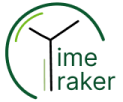How to Calculate Productivity to Improve Business Performance

Understanding how to calculate productivity is now more important in the business environment when competition is the key to success. Therefore, time management aspects as well as time tracking tools play an essential role during this process. The correct tracking app or hour tracking software can help in effective utilization of resources and improving performance of the business. This article will discuss on how to compute productivity, what part time management plays, and the part played by Time Traker in enhancing business results.
What is Productivity?
Productivity can therefore be defined as the level of outputs achieved by a given level of inputs and over a set period of time. It is also measured as the rate between productivity and input. For example, in a manufacturing environment, then one could measure productivity as a ratio between the number of products produced. Furthermore, in the case of a service delivery organization, productivity may be defined in terms of the number of clients treated or the number of projects managed within a specified time. Thus, the calculation of productivity means helps to understand where improvements should be made and what steps should be taken to improve performance.
Why Calculate Productivity?
It is important to calculate productivity for several reasons as described below. Firstly, it creates a possibility to compare the organization’s performance levels with certain industry types or competitors. Secondly, it assists in putting resources in the right places, that is, increasing focus or enhancing areas that score low. Thirdly, the quantification of productivity reveals weaknesses and the scope for restructuring. Hence, knowing how to compute productivity is still essential in determining the ability of the business to perform at its optimum level.
The Role of Time Management
Time Management Strategies

Effective time management is essential for improving productivity. By implementing time management strategies, businesses can ensure that resources are used efficiently and tasks are completed on time. For example, consider the following strategies:
- Prioritize Tasks: Use tools like the Eisenhower Matrix to distinguish between urgent and important tasks. This approach helps in focusing on what truly matters.
- Break Tasks into Smaller Chunks: Large projects can be overwhelming. Consequently, dividing them into smaller, manageable tasks reduces stress and increases focus.
- Set Time Limits: Allocate specific time frames for tasks using time-blocking methods to enhance efficiency. This approach ensures that tasks are completed within set periods.
- Regular Breaks: Encourage regular breaks to maintain high levels of productivity and prevent burnout. For instance, the Pomodoro Technique involves working in 25-minute intervals followed by a five-minute break.
Utilizing Time Tracking Tools
How Time Tracking Improves Productivity
Time tracking tools, such as time tracking software and time tracking apps, provide valuable insights into how time is spent across different activities. These tools can track employee working hours, identify time-consuming tasks, and help optimize resource allocation. Specifically, time tracking can improve business performance in the following ways:
- Gain Visibility: Time tracking tools offer a clear view of how employees spend their time and what happens in the workplace. Thus, this visibility helps in identifying inefficiencies and areas needing improvement.
- Identify Inefficiencies: By analyzing time data, businesses can pinpoint where time is wasted, such as in lengthy meetings or unproductive activities. Therefore, businesses can address these issues effectively.
- Set Realistic Goals: Managers can use time-tracking data to set achievable productivity goals and performance standards. Consequently, this leads to better management of team expectations.
- Enhance Accountability: Knowing that time is being tracked encourages employees to manage their time more effectively. As a result, this fosters a sense of responsibility.
Calculating Productivity

For optimal productivity measurement methods just adhere, to these guidelines.
1. Identify Output and Input elements: by defining what represents the results produced (such, as units manufactured or revenue earned). The resources utilized (like hours expended or materials used). This phase is fundamental in creating a basis, for evaluation purposes.
2. Gather Information: Utilize time tracking applications to compile data on the amount of time allocated to activities. This information can be accumulated over a designated timeframe like a week or a month to offer an overview of efficiency.
3. Lets determine productivity by applying the formula;

For example, if a team produces 100 units in 50 hours, the productivity calculation would be:

4. Analyze Results: Keep track of productivity metrics to spot patterns and pinpoint areas that need enhancements regularly for businesses to make informed choices on how to allocate resources and optimize processes.
Case Study: Improving Productivity with Time Tracking
Consider a mid-sized marketing agency struggling with client satisfaction and time management. The agency decided to implement a time tracking solution to monitor the hours spent on various tasks. They discovered that a significant amount of time was being spent on client interactions and edits.
By using time tracking software, the agency made several changes:
- Defined Projects Clearly: Improved project definitions helped in managing client expectations and focusing on high-priority tasks.
- Streamlined Communication: Enhanced client communication processes reduced unnecessary interactions and streamlined workflows.
- Monitored Progress: Regular use of time-tracking data allowed the agency to track project progress and make timely adjustments.
These changes led to improved client satisfaction and overall business performance. Therefore, the agency’s experience highlights the importance of effective time tracking in achieving better results.
Personal Experience with Time Tracking

For instance, I have once tried applying a time tracking application in a small team which yielded such findings. The first thing that we learned is that we spend a large part of our workday in unproductive meetings. This showed impact in that analyzing the time tracking data helped us reduce unproductive meetings in organization. Therefore, that change worked to enhance our productivity as well as the morale of the teams in place.
Using Time Traker for Better Results
This is one example of a time tracking tool which can assist businesses in increasing their efficiency, namely Time Traker. Highlighted features it provides include quick and versatile QuickBooks Online integration, easy time tracking and comprehensive reports. This is another benefit of using Time Traker since businesses get to understand how time is spent and make necessary changes for improvement. Therefore, Time Traker aids in helping the businesses in improving efficiency in their operations successfully.
Conclusion
In conclusion, how to calculate productivityis an essential tool for enhancing business results. Application of time –control measures by using tools that track time will help the business organization to allocate its resources in the right manner in order to get the best results. Its conclusion is that the use of Time Traker and other time tracking apps is helpful since the gained insights help in boosting efficiency at workplaces. The actualization of these strategies is not a fad but a key competitory necessity for survival in the current mean epoch of business competition. Therefore, the concentration on how productivity can be measured and the use of time management methods proves to be valuable in enhancing efficacy at the workplace.
